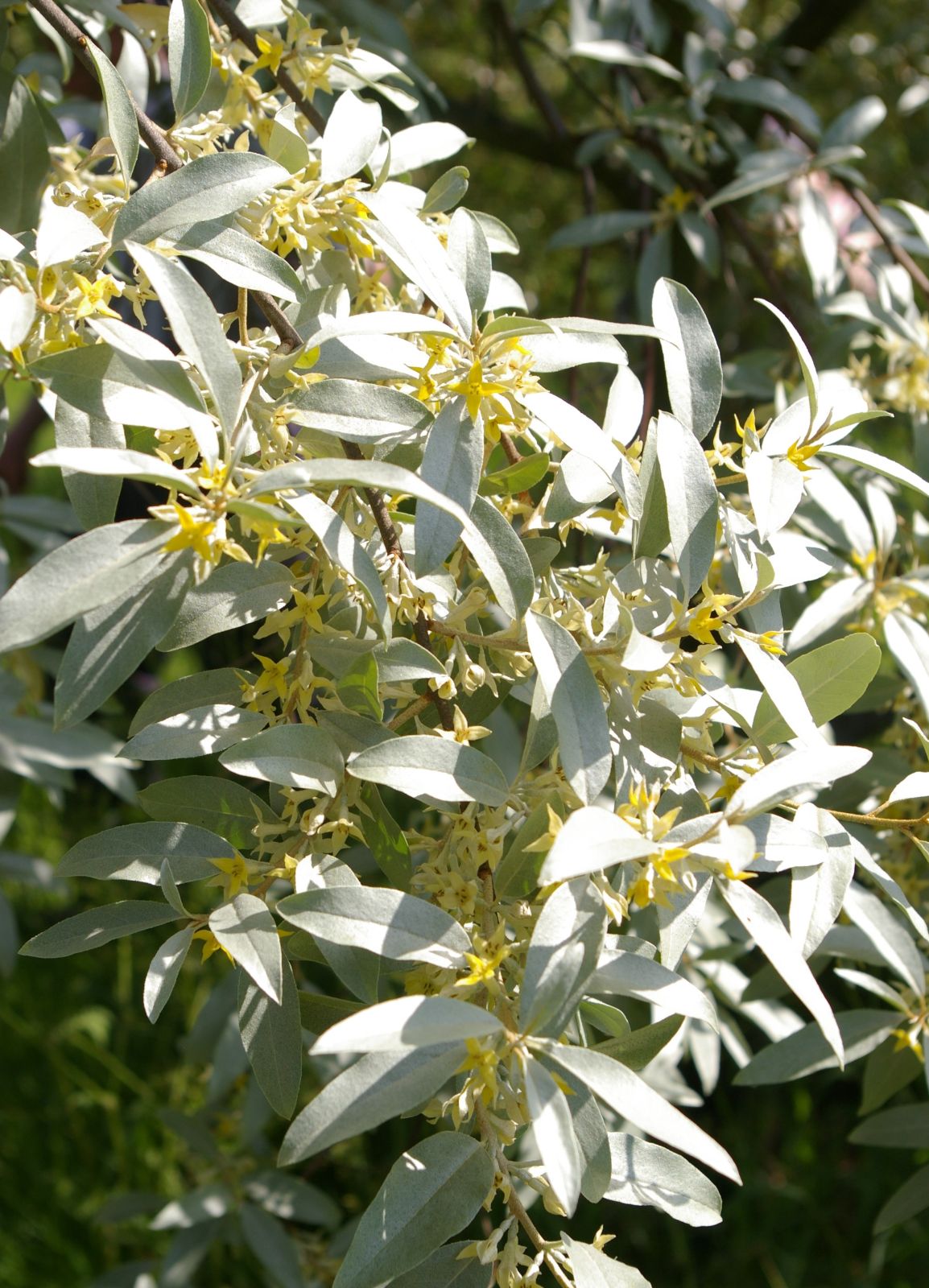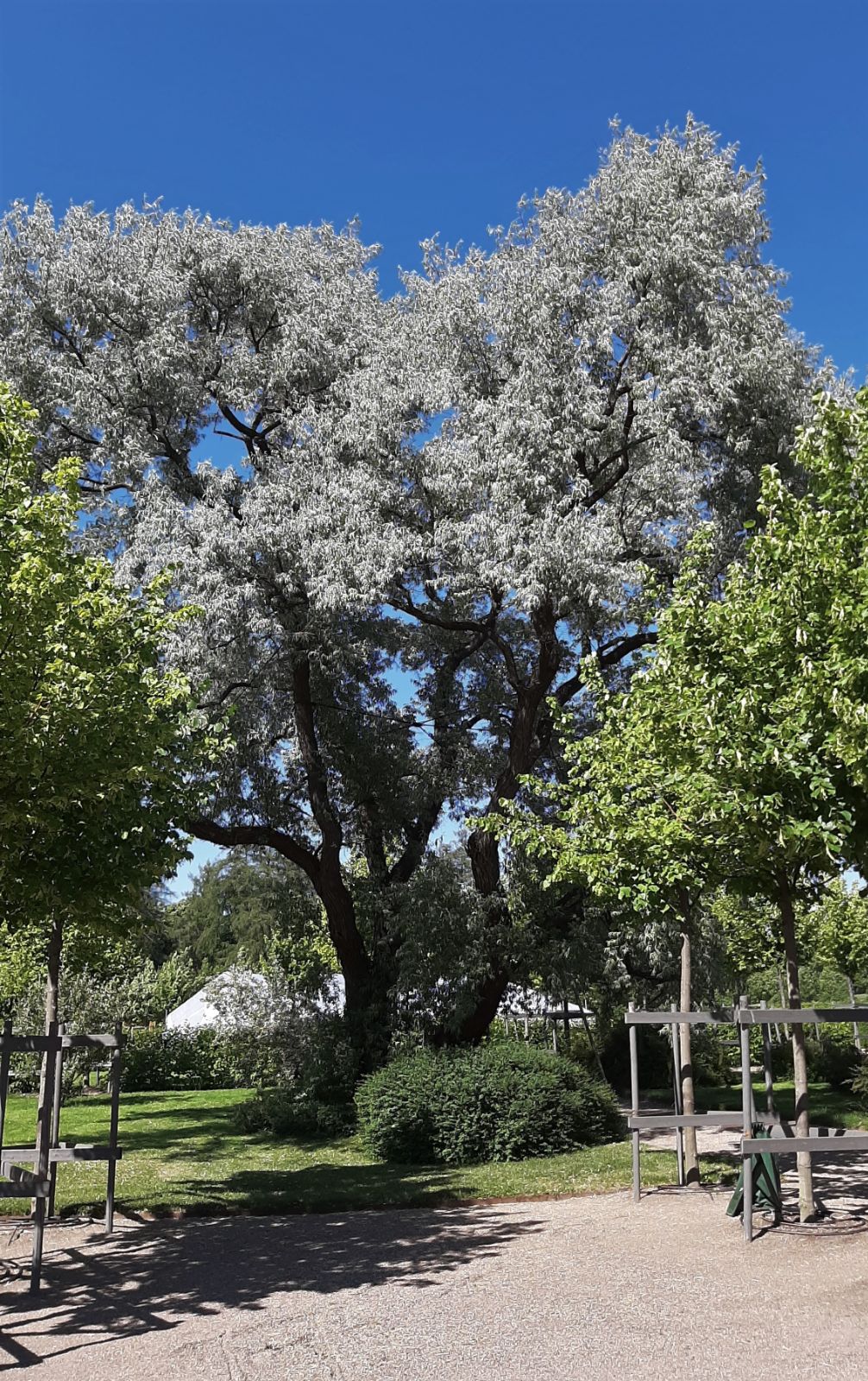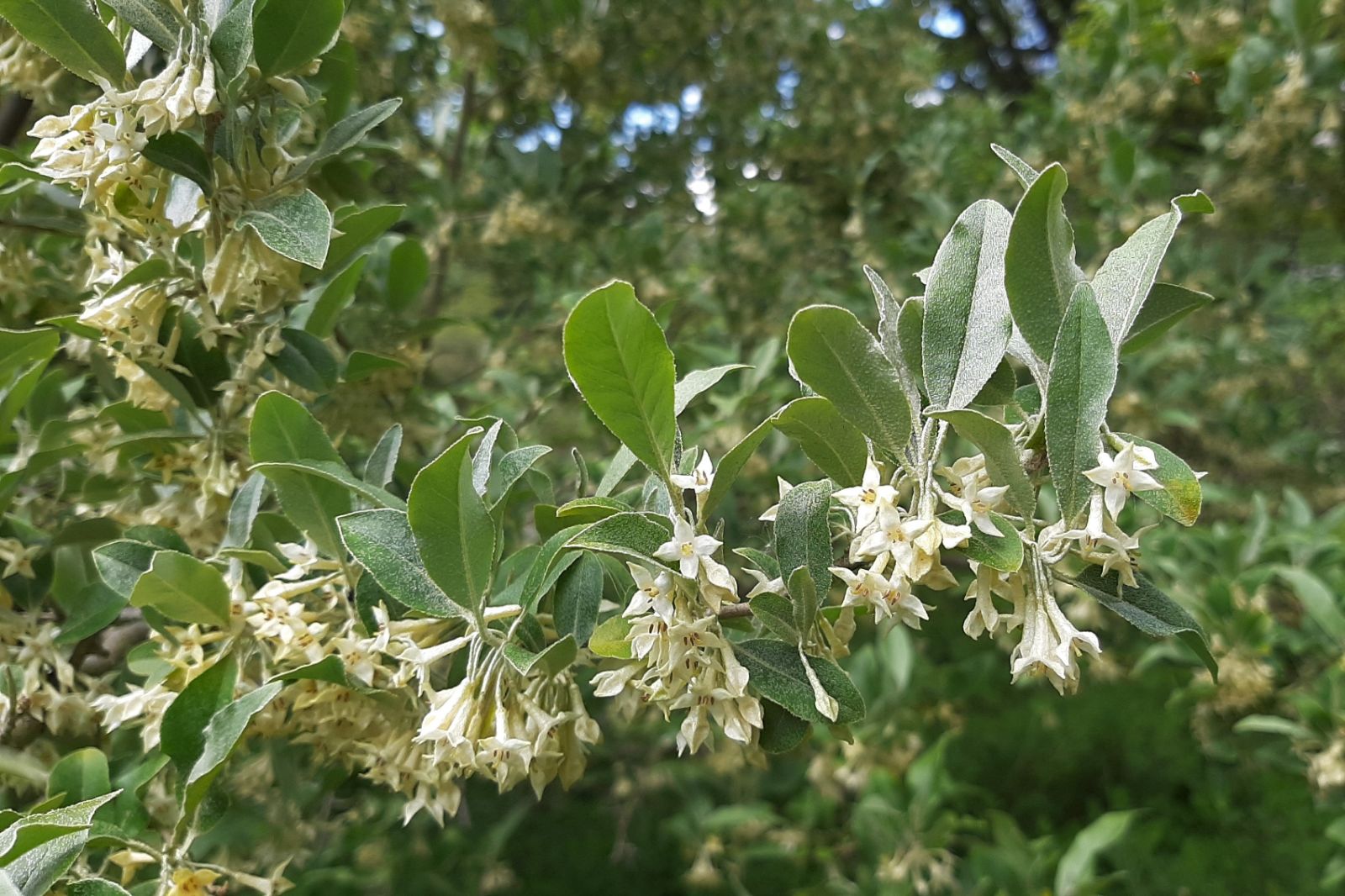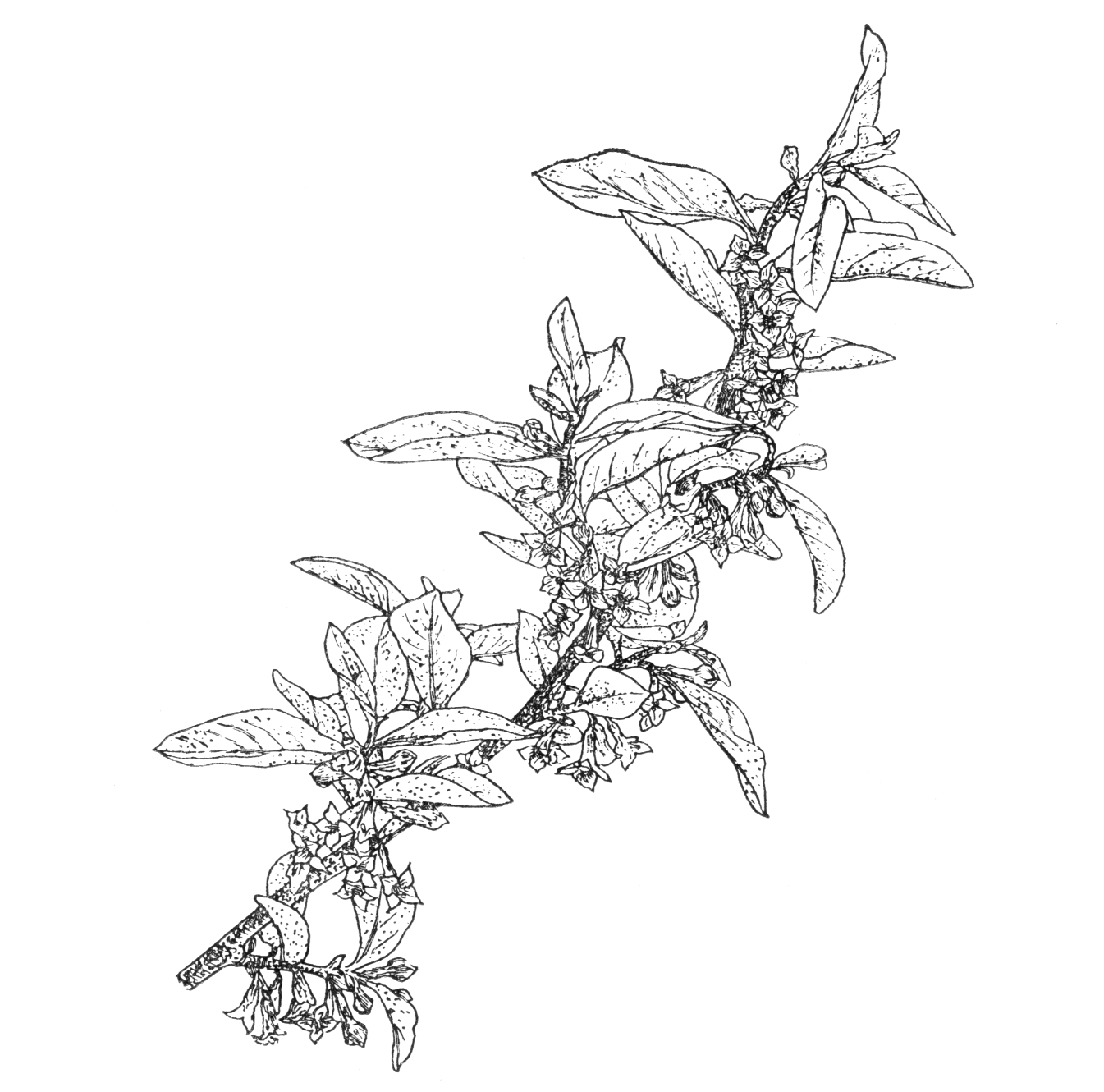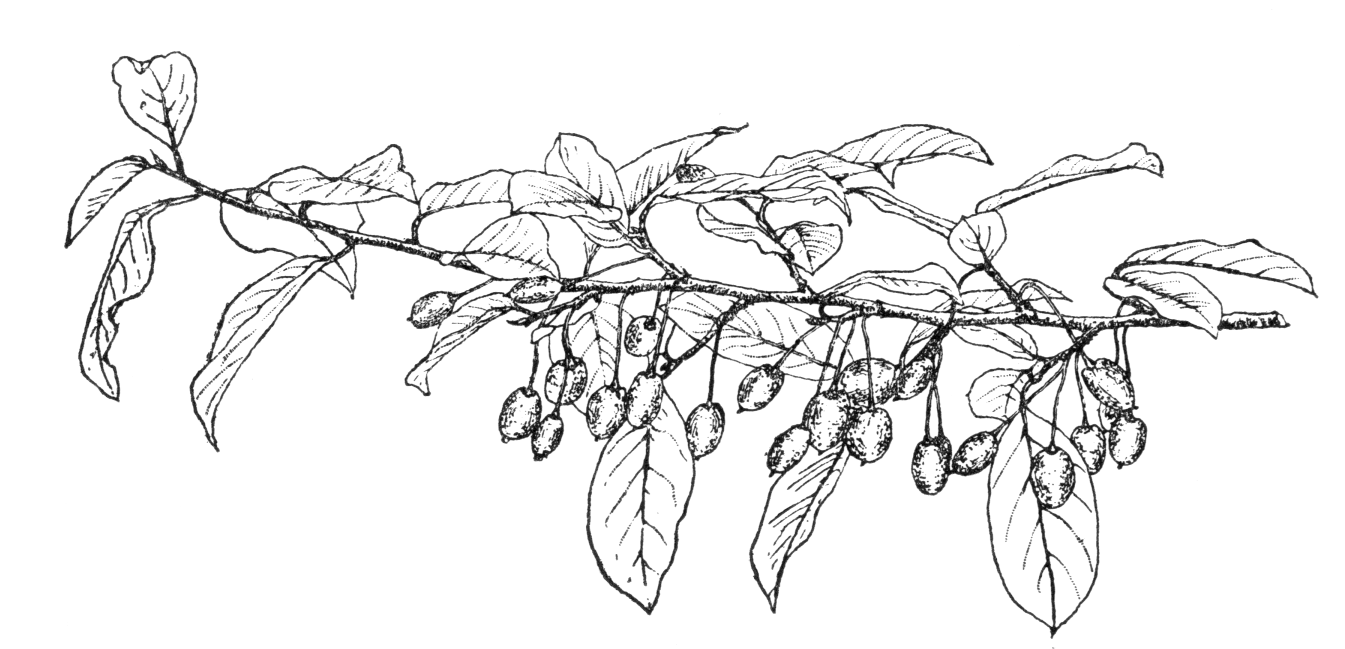Elaeagnus
Credits
Article from Bean's Trees and Shrubs Hardy in the British Isles
Recommended citation
'Elaeagnus' from the website Trees and Shrubs Online (treesandshrubsonline.
Family
- Elaeagnaceae
Common Names
- Oleaster
Of the three genera which form the family of scaly shrubs called Elaeagnaceae, Elaeagnus itself is distinguished from the other two – Shepherdia and Hippophaë – by its perfect (not one-sexed) flowers, and from Shepherdia further by its alternate leaves. It consists of about thirty species of evergreen or deciduous trees and shrubs, all the younger parts of which are covered with silvery or brownish scales. The flowers are in axillary clusters, and mostly fragrant; the perianth (there are no petals) has a cylindrical or bell-shaped tube expanding at the mouth into four lobes, resembling a miniature fuchsia. Stamens four, very shortly stalked, and attached at the top of the tube. Fruit a one-seeded drupe. Some of the scales as seen under the lens are beautifully fringed with silvery hairs; in fact, the whole aspect of the young parts of Elaeagnus under a sufficient magnifying power is remarkably beautiful.
The oleasters need a soil of only moderate quality, for the silvery-leaved deciduous ones develop a better colour on a light, sandy loam than on a rich one. The evergreen species are best increased by cuttings, the deciduous ones by seed. Grafting is sometimes recommended for the evergreen ones, but as the stocks have to be raised from deciduous species, plants so raised are not so healthy and long-lived as those on their own roots. The deciduous species need exposure to full sunlight.

